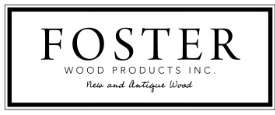TECHNICAL INFORMATION
The classification of longleaf and selected dense grain yellow pine as a "softwood" is somewhat misleading.
The U.S. Department of Agriculture's Forest Service utilizes several measures to test a wood's capacity to withstand assaults on its structure. Below is a chart which lists Specific Gravity and Side Hardness values for various types of woods. These are two such measures. "Side Hardness" is a measure of how many pounds of load are required to imbed a .444 inch diameter ball halfway into the substance. "Specific Gravity" refers to the amount of wood substance per unit volume, essentially its "density". Specific Gravity varies among different types of wood due to basic cell structure.
As the chart below indicates, the longleaf pine has a "Side Hardness" greater than the other commonly found American pine varieties. Regarding "Specific Gravity", the longleaf is not only superior to its pine counterparts, but also holds a higher value than southern red oak, a commonly known hardwood.
These basic elements of the longleaf pine's structure make it a superior flooring option to other types of pine. An argument for the use of longleaf pine over southern red oak in this capacity is also illustrated, providing a less expensive, more stable, environment-friendly, denser flooring alternative.
Species Specific Gravity Side Hardness
Ipe .92 3060
Goncalo .84 1910
Brazilian Rosewood .80 2440
Courbaril (Br. Cherry) .71 1970
Caribbean Pine .68 980
Pecan .60 1310
White Oak .60 1060
Beech .56 850
Northern Red Oak .56 1000
Sugar Maple .56 970
Ash .55 960
Teak .55 930
Longleaf Pine .54 590
Southern Red Oak .52 860
Walnut .51 900
Loblolly Pine .47 450
Shortleaf Pine .47 440
Eastern White Pine .34 290
Balsa .16 n/a
